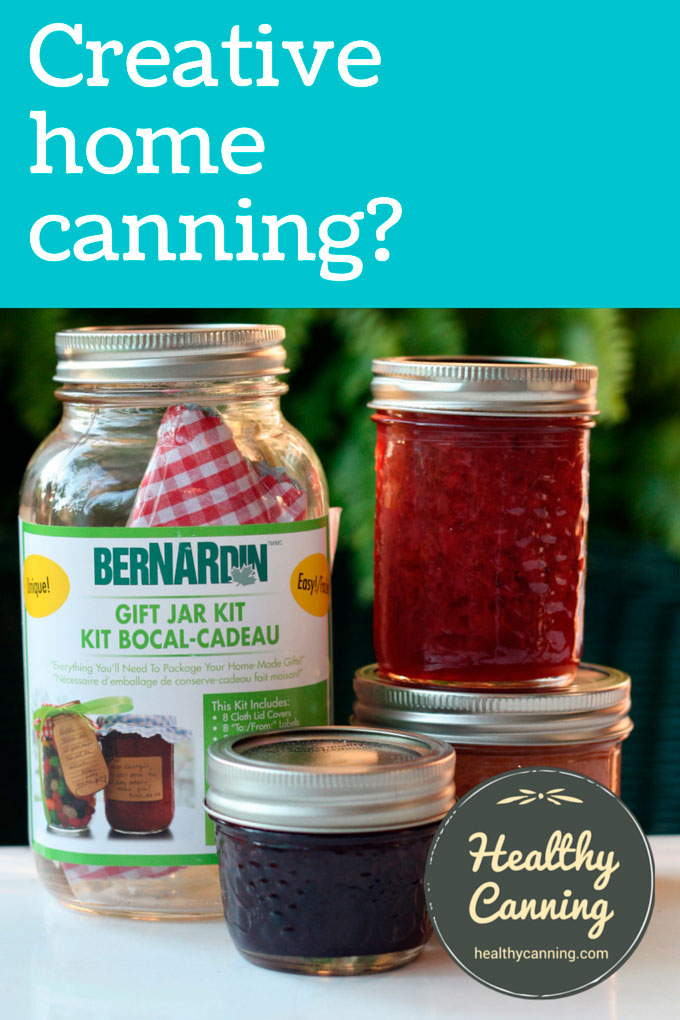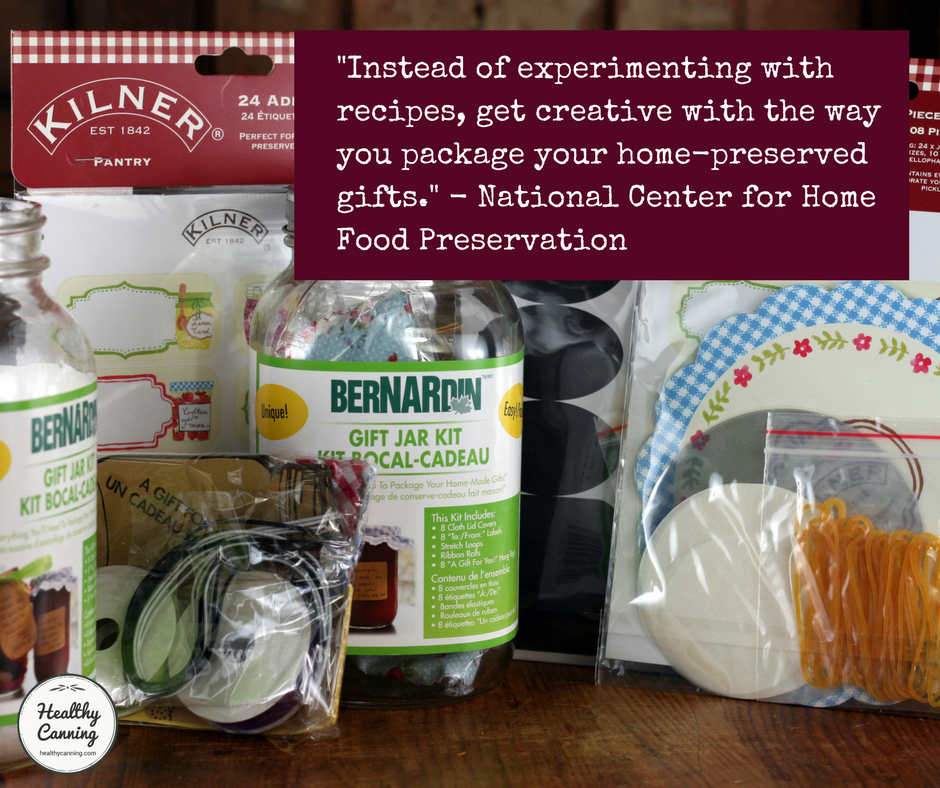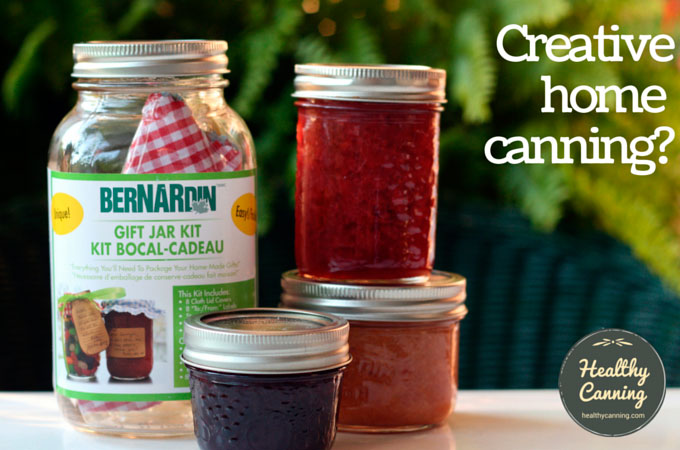Creativity in home canning is a topic that often comes up — and is often hotly debated.
There remain, however, two indisputable facts:
- In canning, the rules — not IQ, not instinct, not being a good cook, nor common sense or years of experience — keep you safe.
- Canning is far closer to baking than it is to cooking: from a quality point of view, precision really does matter for a product that doesn’t result in lunch-bag letdown.
- 1 Newbies want to be creative
- 2 Canning can be as unforgiving as baking
- 3 The most common risk — canned goods going bad and hard work and food being lost
- 4 Spend your first year or two canning as the world’s most diligent student
- 5 The overly negative response to creativity
- 6 Some easy things to be creative with, right from the start
- 7 When is home canning both an art and science?
- 8 Further reading
Newbies want to be creative
The desire to express creativity is found particularly in people who are new to home canning. Elizabeth Andress, head of the National Center for Home Food Preservation, apparently sees it all the time.
[Elizabeth] Andress says she still worries about …. newbie canners [who] often try to get creative…. Andress say many newbie canners still try to do their own thing. ‘You have to use a tested recipe,’ she says. ‘But people will find something on the Internet or make up a canning process. Many times, I’ll look at personal websites and see things that can be very unsafe. People don’t quite understand that they might do it once and ‘get away with it’ but they could try it a month later and get sick — or make someone else sick.’ [1] Mapes, Diane. Homemade holiday food baskets may give gift of botulism. NBC News. 13 December 2010. Accessed March 2015 .
Follow your canning guide as though it were the laws of the Medes and Persians
You might think the desire for creativity in canning is a new thing, as a generation brought up on gourmet TV cooking shows turns to canning, but apparently the phenomenon is as old as the hills. In 1933, a USDA canning spokesperson observed the same thing on a radio show:
If you got me started on the queer things some women do when they start canning, I’m likely to go on talking all night. The safe way to can is to get a reliable canning guide from your State College or from the Bureau of Home Economics at Washington, D. C. and follow that as though it were the laws of the Medes and Persians.” [2] USDA Radio Service. Housekeepers’ Chat. Thursday, 14 September 1933.
Experienced canners are usually long-past wanting to be creative. They just wanna get through the season without having to be checked into the Betty Ford at the end of it.
They know how much work it is just to get through the slog of all the produce coming in all at once to be canned. They are mystified at anyone asking if they can put a bay leaf in a jar of green beans, when there are six dozen jars of them ahead to be done. Being creative to them is seeing how they can persuade or blackmail people into helping with the tomatoes. If you’re more worried about how to gussy them up, they’ll want whatever you’re smokin’.
Canning can be as unforgiving as baking
Canning is like baking: both are very different from general cooking.
No one in their right mind would try to just invent a croissant or sponge cake recipe on the fly, without having consulted a trusted recipe source. Baking can be very unforgiving. The proportions have to be right. You can light as many Tibetan prayer candles as you wish in the kitchen, but the rise of the yeast and the texture of your crumb is all about food science, and you can’t fool Mother Nature here. Winging it, you might be moderately lucky one time with your brioche, but the next time, it will be a tortilla.
In baking, there just are rules and ratios you have to understand and learn before you can fly, and no one in their right mind would deny it. In fact, even the most experienced bakers say they still always precisely measure their ingredients, and a lot of them swearing by weighing as opposed to cups for even more precision.
Remember: the time when bakers relax and let themselves get creative is when the risen cake is successfully cooled on the counter, ready to be decorated.
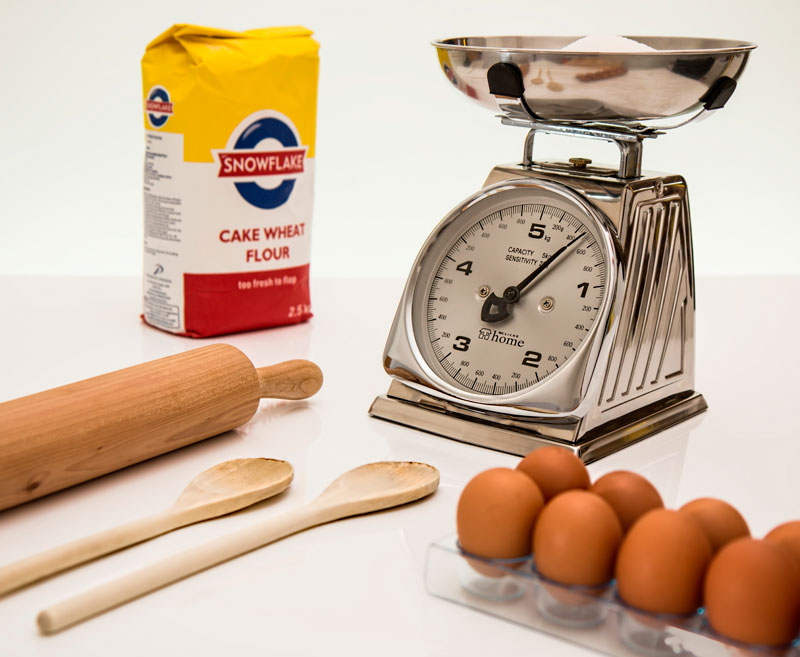
Steve Buissinne / Pixabay.com / 2014 / CC0 1.0
Canning is the same. It is very unforgiving if you are ignorant of the underlying rules, and, you can’t fool Mother Nature.
Julie Garden-Robinson from the North Dakota State University Extension Service says:
Remember this: When you preserve food at home, especially by canning, you are a scientist,” Garden-Robinson cautions. “Food preservation isn’t the time to put on your ‘creative’ hat.” [3] Julie Garden-Robinson, North Dakota State University Extension Service. Quoted in: Preserve your garden’s bounty safely with free resources. Farm Forum. 18 July 2016. Accessed July 2016 at “https://www.farmforum.net/news/preserve-your-garden-s-bounty-safely-with-free-resources/article_62e9d6ff-394c-5b13-a920-780bb63dd965.html.
Barb Ingham at the University of Wisconsin advises,
Leave your creativity behind! Home canning is one area where being creative can lead to food safety disasters. So begin with an up-to-date, research-tested recipe and carefully follow the directions. Don’t make ingredient substitutions, unless they are allowed, and follow the recipe directions through all the steps. Don’t substitute dishwasher canning, oven canning, or open-kettle canning for an approved canning method – boiling water canning or pressure canning. ” [4] Ingham, Barb. 5 Tips for a Successful Home Canning Season. University of Wisconsin Extension Service. May 2011. Accessed June 2011 at
Perhaps the most important thing is methodology. For the food product you are canning, following the proper processing method for the proper tested amount of time. You might catch Mother Nature looking the other way a few times when you improperly process your jars, but eventually she will catch up to you. Never change the processing recommendations:
Elizabeth Andress, head of the National Center for Home Food Preservation worries that a “large percentage of home canners are adapting recommendations in their own ways… [and consequently] over half of home canners under-process.” [5]Andress, Elizabeth L. Research and Education in Food Preservation. Powerpoint presentation. 19 October 2014 at Food & Nutrition Conference & Expo, Atlanta, Georgia. Slide 7.
Even as far back as 1910, at the dawn of home canning, people were being told:
Cooking is an art…. Preservation of food is a science.” [Associated Clubs of Domestic Science, 1910, Madison Square Garden] [6]Orem, Mrs Hugh S. A Revolution in the Kitchen: An address to the Associated Clubs of Domestic Science, Sept. 21 1910, Madison Square Garden, New York City. Bel Air, Maryland: Bureau of Publicity, National Canners’ Association. 1910. Page 13.
The North Dakota State University Extension is still reminding people that today:
Canning is a science, while ‘cooking’ is an art. There’s not a lot of room for creativity when canning.” [7] Garden-Robinson, Julie. Prairie Fare: Pondering the Safety of Pickled Products. North Dakota State University Extension Service. 4 August 2005. Accessed June 2016.
The most common risk — canned goods going bad and hard work and food being lost
The number one goal of home canning is not to have something pretty in a jar. It’s to preserve food in a safe and quality state, and to avoid any spoilage of that food until it is time for it to be used. We currently live in a time of plenty when some food loss isn’t dire, but there’s no guarantee times will always be like that, so it’s important to remember that cardinal principle of canning.
One of the big complaints of beginning canners is their bottled food going bad on them.
It’s because they either have been given bad advice, through no fault of their own, or, they were given good advice and choose not to follow it exactly especially with regards to processing.
Either way, they find themselves repeating exactly the same mistakes people did back at the dawn of home canning.
What has been done will be done again; there is nothing new under the sun.” [8] Ecclesiastes 1:9 New International Version (NIV)
And predictably, they get the same results: spoiled food. And there’s nothing new about that either, unfortunately. People who talk about the “old traditional ways” of canning oddly neglect to add that that a very high percentage of food spoilage and loss from the old ways used to be very, very common.
The Ball Blue Book advised decades ago,
THE preservation of fruits and vegetables by canning is now an exact and known science. Our grandmothers, and even our mothers, were content to lose entirely many quarts of fruit each year; and they were never surprised to find a layer of mold on top of each jar. Science has made wonderful advances, however, and in these days any woman can preserve fruit and vegetables without the loss of a single jar or a trace of mold.” [9] Ball Blue Book, Edition E. Foreword. Muncie, Indiana: Ball Bros. Glass Mfg. Company. C. 1920s. Page 7.
It’s all so unnecessary.
Even in the 1930s, the USDA was telling people that spoilage was completely avoidable,
…spoilage isn’t necessary when canning is no longer a matter of hit-and-miss luck, but a careful science, and when every home canner can have help from reliable sources.” [10]Questions: Information from the Bureau of Home Economics, USDA. USDA Radio Service. Housekeepers’ Chat. 14 September 1933. Page 1.
But as they say, it’s an ill wind that blows no good, and the silver lining in their poorly canned goods showing repulsive signs of spoilage is that they won’t be tempted to eat it: the truly dangerous jars are the wrongly processed ones that show no visible signs of spoilage but hide a dark, deadly secret in them.
People who see their jars of food spoiling after under-processing them are the lucky ones: it’s the under-processed jars that don’t show signs of spoilage….
(And remember, discard any jars of jam with mould — it’s an old-wives’ tale that they are safe if you scrape off the mould!)
Spend your first year or two canning as the world’s most diligent student
Our advice is that, for your first couple of years canning, you want to channel your energies into learning all the rules of the game, and making sure you understand the reasons why.
Don’t be trying to fly before you can run, or run before you can walk, or walk before you can even crawl.
Four pieces of specific canning advice for newbies
- Learn first who can be regarded as reputable sources of sound advice. If you can identify sources of reputable advice to rely on, you will have won half the battle, as the saying goes.
- You can value the well-meaningness of advice from veteran canners who quote their “20 years” of experience, but always check it against primary, reputable sources for yourself. Sometimes these people have not kept up with the times, and give advice that is out of date, either missing steps that are not important, or still doing steps (such as boiling empty jars) that have now been deemed a waste of time and energy resources.
- Don’t fly solo with your “guesses” (for instance, can you use frozen lemon juice instead of bottled.) Check against a reputable source. Many of them are available now on Facebook for quick answers, and if not, many people in safe canning groups will have books they can do a quick look-up in for you (make sure they are referring to reputable books.)
- Do try to understand the reasons why certain best practices are considered the right way to do things (such as debubbling, or avoiding Open Kettle Canning.) That way, when a strong personality (we’ve all heard it: “I’ve canned for 40 years and learned from my grandmother“) comes along and tries to persuade you otherwise, you will know what’s right and why it is.
And bear in mind, even if you make the Ice Water Pickles from So Easy to Preserve (which are delicious by the way) and follow the directions to the T, everyone is going to regard the jar of pickles as your creative work anyway. Even if you tell them it’s a USDA recipe, or a Ball recipe, that will go in one ear and out the other : they will just think of it as “your pickles” and give you the credit. So, let them!
Jessica Piper at Ball agrees that even if you follow a recipe, it is going to be creative.
Canning allows people to be in control of what is going into the food they’re storing for their family,” says Jessica Piper, a Home Canning Expert for Jarden Home Brands. An added bonus, ‘It allows folks to be creative in the kitchen.’ “
Elsewhere, she also says:”With so much produce in season locally, it’s the perfect time to try canning. And before you start thinking you ‘can’t’ do it… according to Piper, ‘If you can follow a recipe and boil water… you ‘can’ can!” [11] Karlinksy, Malia. Canning is cool again. Seattle, WA: Komo News. 19 August 2015.
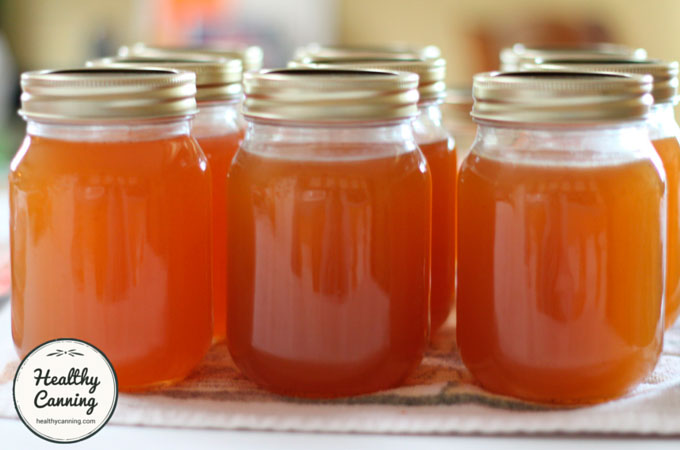
Roxy M. Jones / Pixabay.com / 2014 / CC0 1.0
The overly negative response to creativity
As a side note, the “how to be creative” question frankly often gets an overly negative response. To be fair, it’s often from worn and harried volunteers or other people, but it can come across as though they never want people to make anything other than plain strawberry jam:
You can add basil to your strawberry jam and that’s wonderful, but that’s not how you should be learning to can. You should be focusing on the methodology,” said Kim O’Donnel. [12] Halloran, Amy. Preserving the Art of Canning Safely at Home. Seattle, Washington: Food Safety News. 26 April 2011. Accessed March 2015.
The last part is absolutely correct. When you are starting only, focus on the methodology — what the best practices are, and why (and never let anyone put you off asking why, they need to be able to provide a reason why with a reference back to a reputable source.)
Channel the energy
What such a response is missing, though, is taking that creative impulse and channeling it. The danger with a complete shut-down response is that people will turn to more beguiling voices that may have very unsound practices.
People’s energy and enthusiasm is not going to go away. It’s important to channel it. Of course there are many wonderful variations to strawberry jam that you can, and will, discover along the way. Let’s make sure they know where to find tested recipes for it from reputable sources.
Some easy things to be creative with, right from the start
Here are some ways you can start thinking about being creative.
Just one last time though, remember:
- The very first principle of being creative when home canning is, as mentioned above, learn all the rules and reasons why first;
- The second principle is to be creative safely within safe guidelines.
But we’ve flogged that idea enough now, let’s move on.
Gourmet level canning books
Right off the top, if you are impatient to be creative, we’ll recommend the following:
- For jams and jellies: that you head over to Pomona Pectin, get some and order yourself a copy of their book;
- For pickles, relishes, salsas: get yourself a copy either of Canadian Living or Ball All New, or both.
Those three home canning books have tested, gourmet-level recipes.
But, and here comes a “we told you so” moment: when you do eventually give in and try the deceptively simple looking recipes in So Easy to Preserve or in the USDA Complete Guide, you will have a humbling moment, about just how good simplicity can be. It’s be like what the judges said after they heard Susan Boyle sing for the first time: “We were all being very cynical, and I think that’s the biggest wake-up call ever.” (Britain’s Got Talent, 11th April 2009. Amanda Holden.)
Home canning recipes that are actually just guidelines for you to create inside of
Thankfully, for at least three key items, safe guidelines have been established inside which you can be creative right from the start!
These items are:
- choice salsa (NCHFP);
- your choice soup (NCHFP);
- jam guidelines from Pomona.
Safe tweaking of tested canning recipes
Many professionals in the field are perfectly aware that it’s fine to “tweak” tested home canning recipes in some regards. The reason they won’t trumpet this is:
- They are afraid people will take it as a licence to go wild. As one exasperated Extension Agent has said, “give them an inch, and they’ll take a mile.” So it’s safest — both in terms of end-user health and their jobs! — to not cede the inch in the first place;
- Their job is to help promote people using tested, safe recipes as is. They are not trained in recipe development;
- They are worked off their feet as it is, and don’t have time to field endless questions about the impact of a bay leaf or ¼ teaspoon of chile flake in a recipe.
For any of the above, who can blame them? We’d do the same in their positions.
That being said, professionals in the field are now starting to loosen up a bit, and entrust people with some tweaks that they “authorize” as safe for home canners to do. For a list of these safe, authorized tweaks, and a discussion of the matter, see: Safe tweaking of home canning recipes.
Do not deviate from the tweaks the professionals identify — and again, when starting out, don’t focus on how you can cheat the rules, focus on mastering the rules first!
Creative presentation of home canned goods
The National Center for Home Food Preservation (NCHFP) suggests, “Instead of experimenting with recipes, get creative with the way you package your home-preserved gifts.” [13] NCHFP. Blog posting 10 December 2014. Accessed July 2016.
While of course you want to play it safe and stay with Mason jars with the approved two-piece lid closure system, you can also get creative with the variety of sizes and colours of mason jars now available from Ball and Bernardin (the coloured jars are certified safe for all home canning.)
If you do get creative with jar size, remember to only pick a jar size for which an appropriate processing time can be found. You can’t pick a jar size larger than for which there is a tested processing size. If you are using a smaller jar, use the next up tested processing time.
The NCHFP explains,
If you use an attractive canning jar of a unique size (12 oz., for example) and you can’t find canning recommendations for that size jar, be sure to use the next biggest size jar that does have canning recommendations (so in the example of the 12 oz. jar, follow the process time listed for pint size jars). Otherwise the product might be under-processed and risk spoilage or causing sickness. [14] NCHFP. Blog posting 10 December 2014. Accessed July 2016.
Both Ball and Bernardin now also offer coloured lids and canning ring bands.
Bernardin also offers “creativity in a jar”: a kit that lets you “cheat” a bit timewise in dolling up gift jars by providing everything you need to make it look like you spent all evening personalizing someone’s jar.
Creativity in planning
In your first couple of years, one of the most important uses of your energy is for forward planning. Start a spreadsheet (or file format of your choice) and start recording:
- how much you bought or harvested of something;
- where you bought it;
- how much you paid;
- what the date was that it came in season or appeared on the store shelves;
- how many jars of what various products you got out of that;
- what approximately your cost per jar was based on that main ingredient alone.
Even if you are just doing 3 types of jam a year, your next-year self will give a silent nod of thanks to your this-year self for this information.
Armed with that information, you will know approximately when during the summer you will be out of action socially to can your things, what stores to start looking in, and what monies you need to be putting aside for it. You’ll also know whether to increase or decrease the amount of a particular produce item you worked with.
This is honestly one of the most important way for beginning canners to channel some of their creative energy into.
When is home canning both an art and science?
And to be intellectually thorough, let’s address the question of when home canning is a bit of both, art and science.
Lynn Little at the University of Maryland Extension says,
Home food preservation is a science and an art.” [15] Little, Lynn et al. Grow It Eat It Preserve It: Food Preservation Curriculum. University of Maryland Extension. Extension Curricula EC-03-2013. Jan 2014. Accessed March 2015. Page 4.
We’d say the art part comes in the following:
- be on the lookout for new recipes to use your home canned foods in, so that your audience doesn’t rebel after being served plain home canned carrots for the seventh night on the trot, year in and year out (add a splash of Grand Marnier before nuking them in the microwave!);
- continue to do the processing by the book, but take advantage of new efficiencies as they are announced, such as switching from water-bath canning to steam canning;
- try a new tested recipe. The USDA spaghetti sauce recipe is amazing, but maybe it’s time to switch it up and try a roasted tomato sauce from Ball instead;
- try growing some of your own produce. Even if you live in a city apartment, your city may have community gardens or allotments you can sign up for inexpensively;
- consider looking at dehydrating or fermenting
- try brewing your own beer, or wine!
Other things to do
- track with a spreadsheet (or somehow) what produce you got this year, how much of it, for how much, and how many jars you got from them;
- next year, plotting your canning campaign ahead based on that information;
- after a season or two, working out the right size of jars to be using for the people you are supplying with home canning;
- get on mailing lists and news groups for the latest and greatest home canning news from reputable sources.
In all these ways, you start to fly as a home canner while keeping your food products grounded in safety and quality.
Remember, too, if you want to give someone something special, you want to make sure it’s 110% safe. You don’t need to doctor it up — anything homemade these days will be regarded as special.
Further reading
McClellan, Marisa. Canning 101: How to Can Creatively and Still Be Safe. Blog Post. 15 December 2010. Accessed June 2016.
National Center for Home Food Preservation. Why can’t I can what companies can? Blog post. 16 April 2013. Accessed June 2016.
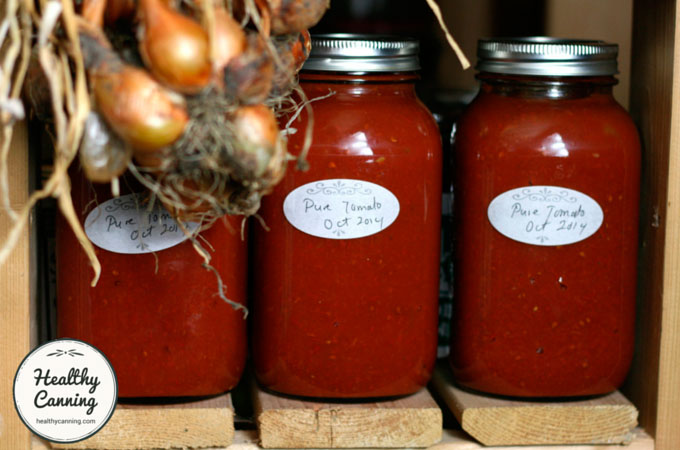
Even the simplest things, canned pure and honest, will take people’s breath away.
References

